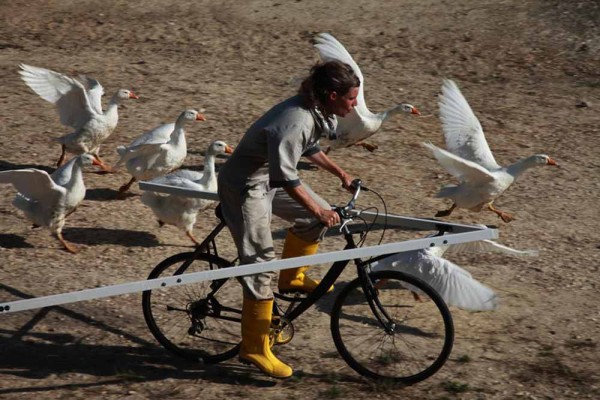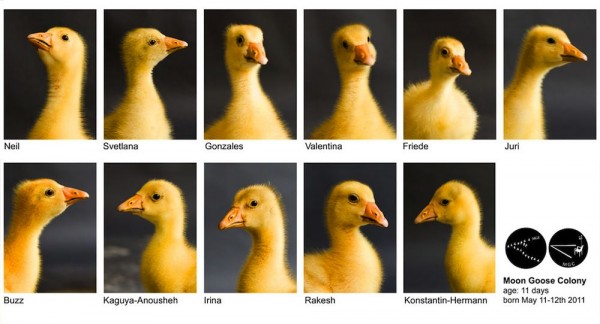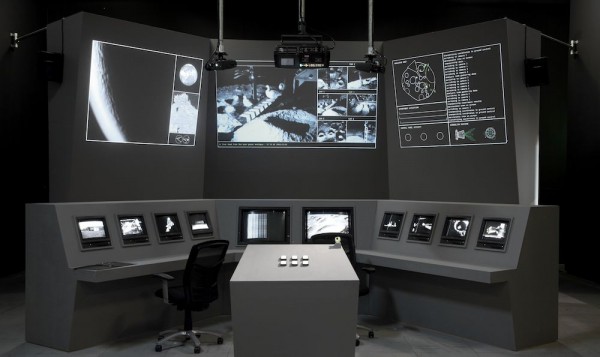Agnes Meyer-Brandis
Tuesday, 1 May 2012
Work from Moon Goose Colony.
“Agnes Meyer-Brandis’s poetic-scientific investigations weave fact, imagination, storytelling and myth, past, present and future. In Moon Goose Analogue: Lunar Migration Bird Facility, a major commission, the artist develops an ongoing narrative based on the book The Man in the Moone, written by the English bishop Francis Godwin in 1603, in which the protagonist flies to the Moon in a chariot towed by ‘moon geese’. Meyer-Brandis has actualised this concept by raising eleven moon geese from birth within her project Moon Goose Colony at Pollinaria in Italy; giving them astronauts’ names*, imprinting them on herself as goose-mother, training them to fly and taking them on expeditions and housing them in a remote Moon analogue habitat. (* Neil, Svetlana, Gonzales, Valentina, Friede, Juri, Buzz, Kaguya-Anousheh, Irena, Rakesh, Konstantin-Hermann)
The remote analogue habitat simulates the conditions of the Moon and will be accessed and operated from Meyer-Brandis’s control room installation within the gallery, where instructional videos, photographs and vitrines of the geese’s egg shells and footprints will be displayed.
Meyer-Brandis develops the contested history of Godwin’s original fiction – posthumously and pseudonymously published as if the genuine account of the travels of Domingo Gonsales. She weaves a narrative that explores the observer’s understanding of the fictitious and the factual, with a nod to notions of the believably absurd.
Oxford academic, William Poole [1], in his Preface to the 2009 edition of The Man in the Moone [2], explains the importance of Godwin’s work, “First, it is a work of literary sophistication. It is narrated by a slightly implausible figure who does a number of very implausible things, not least fly to the moon and back.…its supposed time-frame further heightens readerly problems about who and what to trust in this text, and why… its finely integrated discussion of various state-of-the-art ideas about astronomy and cosmology – magnetic attraction, diurnal rotation, and the possibility of interplanetary travel and extraterrestrial life. The dramatisation of these discussions in The Man in the Moone is at once a form of popular science and also a form of popular fiction. This is the age-old problem of fiction – the probable impossible intermingled with the possible improbable.”
Moon Goose Analogue: Lunar Migration Bird Facility, 2011 links directly to Meyer-Brandis’s, Moon Goose Colony, 2011, a project during her residency at Pollinaria, Italy, the site of the remote analogue habitat where the artist has raised and houses the colony of moon geese.” – The Arts Catalyst


